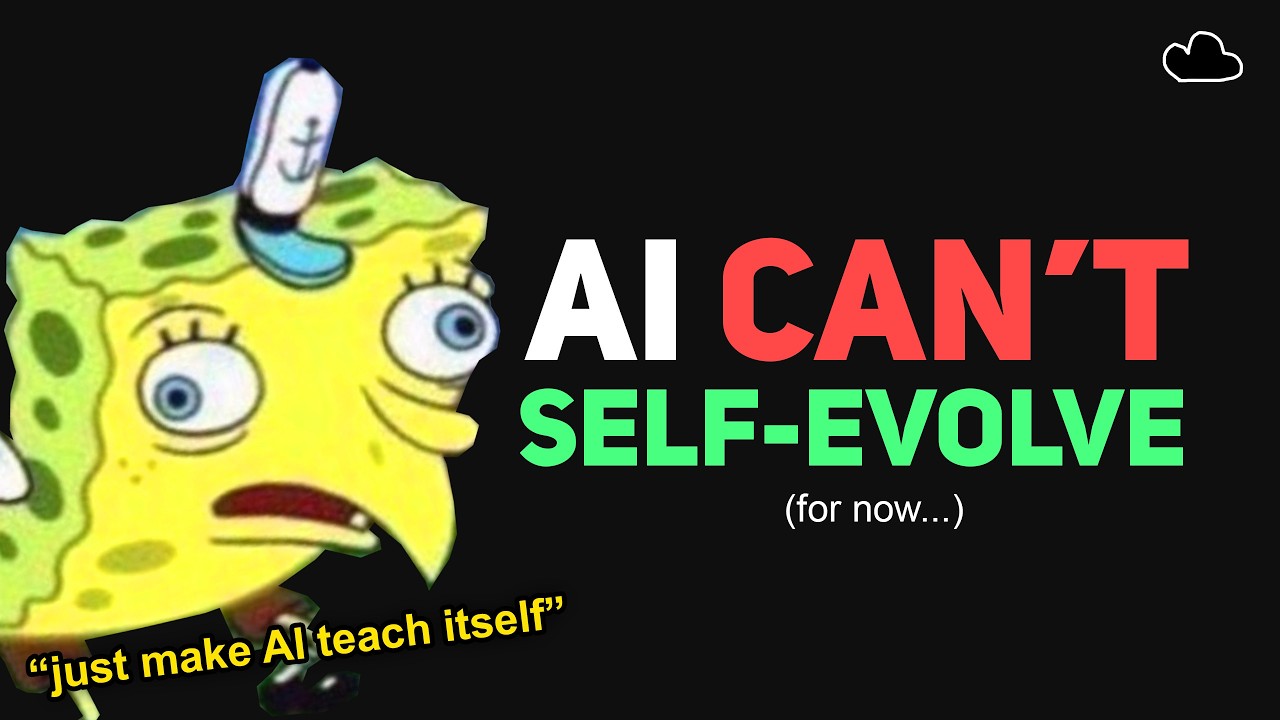The video discusses the SEAL framework, a method enabling AI to self-improve by generating synthetic training data and fine-tuning itself iteratively, showing promising but limited gains. However, challenges like diminishing data novelty, catastrophic forgetting, computational costs, and the need for reliable reward signals prevent infinite self-improvement, highlighting the necessity for better autonomous learning environments and feedback systems.
The video explores the intriguing question of why AI, despite its intelligence, cannot infinitely self-improve. It introduces a recent research paper on self-adapting language models (SEAL), which attempts to enable AI to self-improve by generating its own fine-tuning data and adjusting hyperparameters. The process involves using a technique called LoRa (Low-Rank Adaptation) to fine-tune large models by training small additional parameters while keeping the main model weights frozen. This approach allows the model to simulate the effects of synthetic training data and iteratively improve itself by selecting the best-performing fine-tuned versions.
The SEAL framework works by having the AI generate synthetic training samples from existing data, then training multiple LoRa modules on these samples. Each module’s performance is evaluated by attaching it to the base model, and the best-performing LoRa is used as the foundation for the next iteration. This cycle repeats multiple times, gradually accumulating a synthesized dataset that helps fine-tune the base model. Experiments showed that this method outperforms simpler approaches that train directly on synthetic data without evaluation, demonstrating significant improvements in model accuracy after just a few iterations.
Despite these promising results, the video highlights several limitations preventing infinite self-improvement. One major issue is the diminishing novelty of self-generated data, as the model’s edits become less informative over time due to reliance on the same benchmark datasets. Additionally, catastrophic forgetting occurs, where the model loses previously learned information faster than it gains new knowledge. The process is also computationally expensive and still heavily reliant on human-designed heuristics, such as data augmentation techniques, which limits scalability and autonomy.
Another critical challenge is the need for reliable reward signals to guide the model’s learning. Unlike next-token prediction, which has a straightforward loss function, meta-learning and reinforcement learning require carefully constructed feedback mechanisms to maximize long-term rewards. Current self-improving models are constrained by the environments and benchmarks they operate within, making them “benchmark maxers” rather than truly autonomous learners. The video suggests that breakthroughs in creating minimal-human-intervention environments and reward systems are essential for achieving genuine, continuous self-improvement.
In conclusion, while the SEAL framework represents a significant step toward automated self-improving AI, infinite self-improvement remains out of reach due to practical, computational, and theoretical challenges. The video emphasizes that future progress depends on developing better environments and reward mechanisms that allow AI to learn and adapt autonomously without heavy human guidance. Until then, self-improving AI will likely remain limited to incremental gains within predefined benchmarks rather than achieving limitless growth. The creator also invites viewers to follow their newsletter for ongoing updates on cutting-edge AI research.
